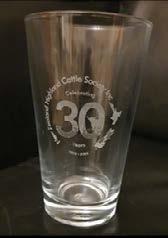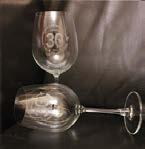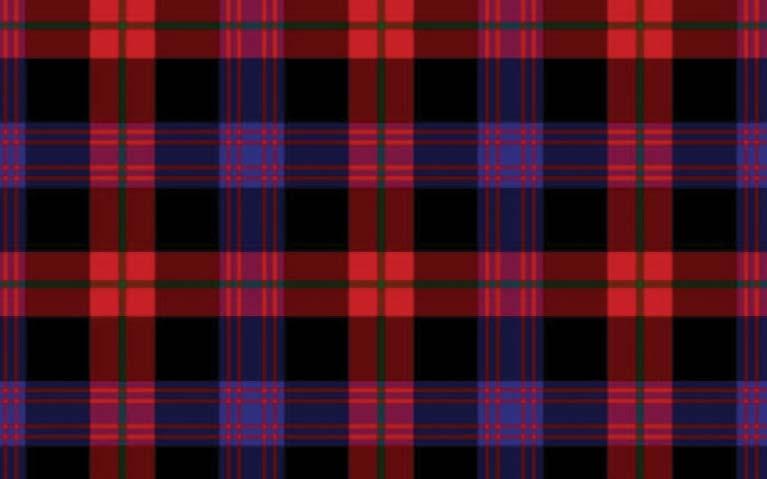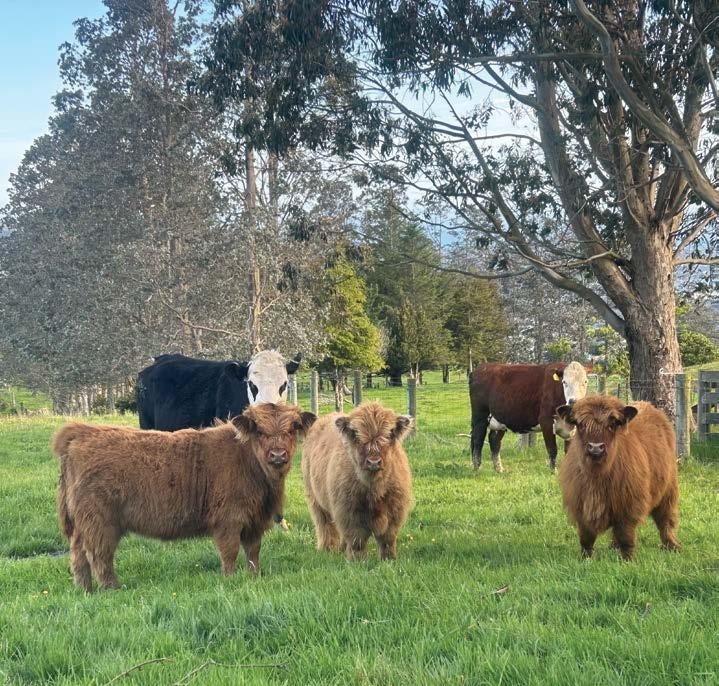NEWSLETTER - JANUARY 2024
RUMINATING REMINDERS
JANUARY
Annual subscriptions due
· Order Society and NAIT tags for Autumn calves
Consider nominations for Council
Send items/notices for Web alerts and the newsletter to editor@highlandcattle.org.nz
19 – 22 Jan – Horowhenua Royal Show
28 – 30 Jan Otago/Taieri A&P Show
FEBRUARY
Bull Assessments April round applications due. Contact Registrar or visit the website to download a form
Last day for acceptance of remits, 15 February
2 – 4 February Dannevirke A&P Show
4 – 5 February Gore A&P Show
11 February Central Otago A&P Show
14 February Valentine’s Day – Show us how much you love your Highland Cattle! Send your pictures through to editor@highlandcattle.org.nz for the April newsletter.
18 – 19 February Franklin A&P Show
19 February Masterton A&P Show
25 February Helensville A&P Show
25 – 26 February North Otago A&P Show
MARCH
Return Bull assessment requests by 1 March
Fill out your Spring/Summer registration for calves and send through to The Registrar
Remember to take photos suitable for calendar submissions, ready for August submission
4 March Southland A&P Show
4 March Morrinsville A&P Show
10 – 11 March Upper Clutha A&P Show
11 – 12 March Kumeu A&P Show
18 March Hawarden A&P Show
18 March Warkworth A&P Show
COUNCIL CORNER
Wow, what a year 2023 has been. It’s definitely been a year of up’s and down’s alongside a lot of new exciting ventures.
With a lot of you with calving well underway, and mating time just around the corner it’s a very exciting time to be picking your next season’s calving choices that will improve the breed for New Zealand. I’ve currently got a number of cows about to start their AI program alongside a group of recipient cows being prepped for some exciting ET work. I’m very much looking forward to seeing what 2024 has in store for us.
The council has a number of projects and changes underway to better help its members and promote our fantastic breed.

There is great interest out there for our breed. Recently I attended the New Zealand Agricultural Show in Christchurch. Our stall always had many people outside it. They loved being able to interact with the animals on show and just ask questions and of course be able to purchase our calendar. Our merchandise has been met with great demand which is very pleasing to see.
For anyone thinking they might like to venture into showing I’m always available to answer any questions you might have or to discuss anything Highland cattle wise.
I hope everyone has had a nice summer break away and a fantastic Christmas and New Year. Look forward to catching up with you all in 2024!
James Brown
‘’SHOWING OFF’’ OUR BREED … BY JUDY SMYTH
As owners of Highland cattle we have an inherent responsibility to promote our breed and choosing to show our cattle is one means we have of doing so. Shows and showing are great fun and important for the breed, in that they allow the public to see the unique characteristics of the breed and the cattle at their best, clean and well nourished. Essentially, you are choosing to show cattle from your fold that are good feeders and breeders, who are well trained and prepared for showing. When choosing to show cattle we must realise that effectively we are entering cattle into a bovine beauty contest and that presentation of the animal is a huge part of the game. Animals are being visually appraised by both judges and the public and should be thoroughly washed, dried, brushed, horns and hooves oiled and in a bulls case, a trimmed sheath (when necessary), if they are to look their best. Showing also provides competition within the breed and allows for comparisons to be made between individual animals and folds, although of course they are not the only means we have available for selection and comparison, others include carcass traits/frame scores, bull performance, functional convenience traits, genetic tests, pedigree information, impact of Dams and Sires etc. As Highland owners, who choose to show animals, it is our responsibility to try and make sure that we are attempting to select, where possible, animals that possess the unique physical characteristics of the breed (horns, head, dossan, coat etc.) whilst also building on the breeds tradition of producing a functional animal, whose sure future in New Zealand may well lie in the production of high quality beef.
The majority of shows are run under R.A.S rules and these can be inspected at the show secretary’s office but individual shows may have slightly different requirements. Always check that your cattle are of sufficient grading to be shown. Show Passports must be obtained for any cattle you will be showing. As members of the NZHCS you will need to notify the registrar of the names of animals you wish to show, their herd book number and identification and the show you are entering. Verification for individual animals is a once in a lifetime process, when approval is given the animal will be issued with a showing passport for its lifetime.
Classes of animals that you are eligible to enter will vary from show to show, if sufficient potential exhibitors are wanting to show, you may well approach the local A & P group and suggest that you have your own Highland rings, if not then you will probably be showing in All breeds rings, where you will compete with breeders of other breeds. If you have your own Highland rings then you may well wish to go on and compete in Interbreed rings later, held after the All Breeds have been completed. Note that not all shows run Interbreed rings.
Ideally, an animal being presented for showing will have been broken in and taught to lead well before it is being shown. Temperament or lack of nerves is important, if the animal is to be well exhibited and shown off by its handler. Using a show stick enables you to relax the animal and stand it to its best advantage. At 12 months and over, Bulls being shown must be rung, 2 handlers should manage a senior Bull. Cows are not required to have a nose clip, but if you do have a stroppy female, a nose clip helps for better control of that animal, as opposed to exhibiting an unruly animal, cattle can be taught to accept a nose clip during your training.
As an exhibitor it may be helpful to know what a judge will look for. From the moment you enter the ring, judges start their appraisal of your animal, beginning with the head and moving back through the animal to the length and depth of the loin, taking into account, shoulders, top line, mid section and underbelly. A judge essentially considers 3 views of the animal, top, side and rear view, whilst the animal is both walking out and at rest. Essentially a judge will consider 3 interrelated elements, 1. Eye appeal and breed character, 2. Clean lines 3. Structural soundness. Therefore, creating the right first impression as you enter the ring with your animal is very important. Training your animal to carry a high held head out of the top corner will create immediate eye appeal, this tends to give the animal an alert look and set the animal’s neck, shoulders and back line straight and evenly. If at all possible, try to select to show animals that have this attribute naturally. When judging breed character, a judge must look for animals that exhibit characteristics that best reflect the breed’s standards but must also define these characteristics in regards to the animal’s gender, e.g. a bull should have a masculine head/horns and neck, cows should possess a refined feminine head and neck with smooth shoulders. Clean smooth, well blended lines, of sufficient length or depth are important, particularly that of the shoulders and back. The underbelly should be straight and trim, trimming of a bull’s sheath may help. The animal must appear balanced and in proportion, with heavier well-placed muscling at the rear end and be devoid of a wasty front dewlap. The structural soundness of any animal is essential, legs must be correctly placed under the 4 corners of the animal’s body. The correct structure of the feet and legs is incredibly important as they carry the weight of the animal around. The judge will appraise heels, pasterns and leg joints for correctness, ensuring ease and freedom of movement, when walking. Sex character, that is respective masculinity and femininity plus the breeding anatomy of genders is also considered. A bull’s sheath and testicles will be of significance, as will the well-spaced hips and balanced even udders in a breeding cow. To sum up, the role of the judge is to look for the animals in each class that have eye appeal, whose breed characteristics are representative of the breed, that possess straight clean lines have height and length as appropriate to the breed, possess structural soundness and meat potential.
Always know the particulars of your animal’s, a judge may well question you on birth dates, perhaps to verify that you are in the correct class eg junior, senior calves, or perhaps to develop an understanding of growth rates. Never go into a ring unprepared for questions, an error could play out with an appeal being placed by other exhibitors, showing needs to be a
pleasant experience for all concerned. Too much time and energy goes into showing for it to turn to custard!!! After judging a class, the judge should always try to speak to good points of animals, whilst being honest and sincere but devoid of bias. The judge’s comments should reflect sound reasoning, offering effective reasons /statements for the choices they have made in placing animals. If you wish to discuss anything with the judge you may ask to do so, sometime later, but it is not deemed appropriate for a judge to approach an exhibitor, neither should a judge view the catalogue or animals prior to their being shown. When putting teams together the judge will make choices and selections of animals wanted. They will need to speak with you about which animals to bring out, but not by entering stalls and sheds, co-operation with the judge and effective communication between exhibitors is imperative. Co-operation, willingness and camaraderie between members certainly create an enjoyable day out for all and it’s a great means of learning to be an effective competitor. Your winning ribbons may be displayed around your stall and be worn in a grand parade, in the event of you having limited handlers of your stock, it is usually acceptable for a representative animal from your fold to wear all ribbons, if unsure ask. Your role and the judge’s role have been outlined but the role of the steward is an equally important one, they are there to control the ring, its classes, they know what each is about and timetabling of. A judge may request that they ask you a question, perhaps about animal age for example. The judge will probably also ask the steward for animals to be paraded in a particular way and they will bring forward the judge’s selection of place getters. Getting animals ready for a show takes time and energy, but the pleasures can be immense … If you are considering showing for the first time, do so, you will find fellow Highland breeders supportive, and the camaraderie is to be enjoyed. For those of you well versed in showing, a big thank you, your council is very appreciative of the support and commitment you give to the breed.
Good luck for the up-and-coming show season, may it be rewarding and successful for you.




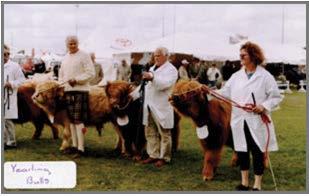


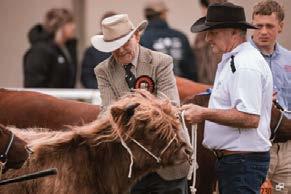


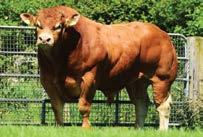 Max Van Eyt – Ngatea
Max Van Eyt – Ngatea




